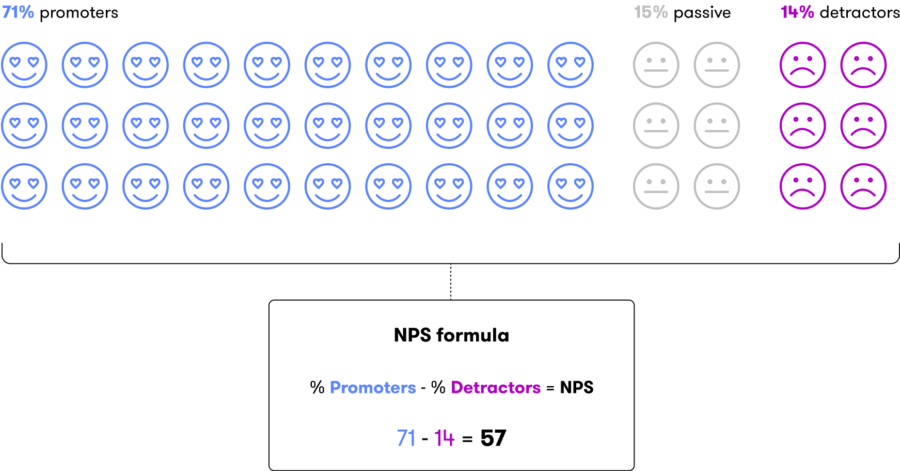Customer Experience > Net Promoter Score > What is NPS?
Customer Experience > Net Promoter Score > What is NPS?

Net Promoter Score (NPS) is the key metric behind the Net Promoter System. It is measured by asking “the ultimate question”: how likely are you to refer this brand to a friend or family member?
The answer allows companies to track promoters and detractors, producing a clear measure of their performance through customers’ eyes.
Research has proven that promoters spend more and are less price sensitive. They’re more likely to try new product offerings, they encourage others to buy from you, they churn less, and their lifetime value is higher.
NPS is also a great gauge of how well an organization serves its customers and the quality of its overall experience.
Customers are typically asked to rate their “likelihood to recommend” on an 11-point scale (0 to 10). Based on their responses,
they will fall into one of three segments:
These customers had a great experience and are the most likely to make a repeat purchase. They will positively advocate for the brand to their own inner circle, like friends and family.
These customers had neither a great experience nor a bad experience. Rather, it was an okay experience. This group won’t actively advocate for your brand and will consider competitors.
These customers had a negative experience with your brand. There are frustrations, frictions, and issues that need to be resolved (closing the inner loop). When a brand closes the loop and resolves a problem, it can recover the customer relationship and win back their loyalty for future purchases.

There’s no hard and fast answer to this question, but there are certain guidelines you can use to understand how your NPS stacks up.
Any score higher than 0 indicates you have more promoters than detractors. Scores above 50 are considered to be above average, and score of 80 or more are outstanding.
It’s next to impossible to achieve a clean 100, since that would mean every single customer was completely satisfied with your CX. There’s always room for improvement!
First of all, let’s clear up a misconception about the term NPS! Since the “S” in this acronym stands for “score,” the term “NPS score” is actually redundant – kind of like saying “ATM machine.”
The NPS scale isn’t just 1 to 100. It can technically go as low as -100, which would indicate that every single customer was dissatisfied. That’s about as likely as your brand scoring +100, so don’t worry too much about that.
This metric is calculated using a pretty simple formula:
NPS = % of Promoters ( — ) % of Detractors
Did you know there are 2 types of NPS? The first is Absolute NPS, which compares your score to every other business in any industry. The second, Relative NPS, is a comparison between you and your competitors. Both types are valuable for different reasons, and it’s important to know where you stand both in general and vis-a-vis brands in your industry.
There’s no limit to the CX improvements brands can make with Chatter’s help, from improving customer satisfaction and increasing employee retention to optimizing website performance.